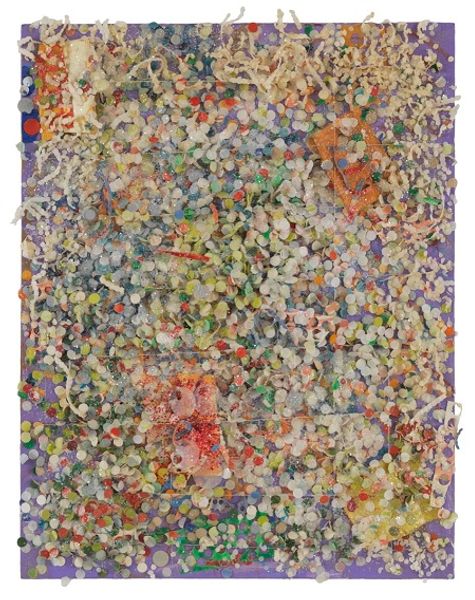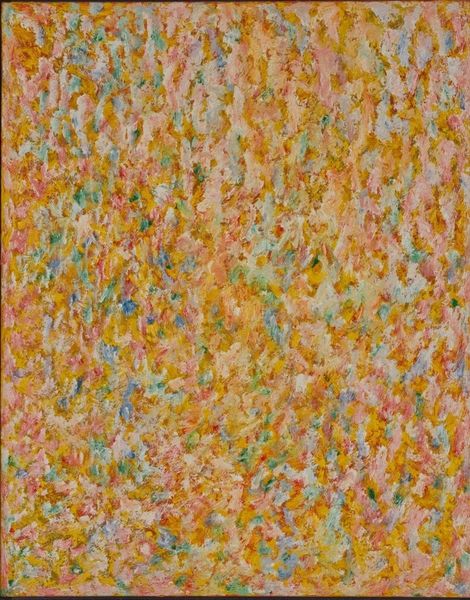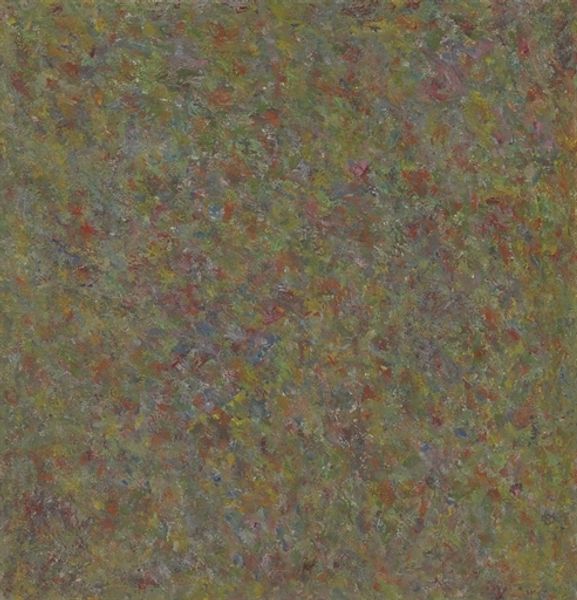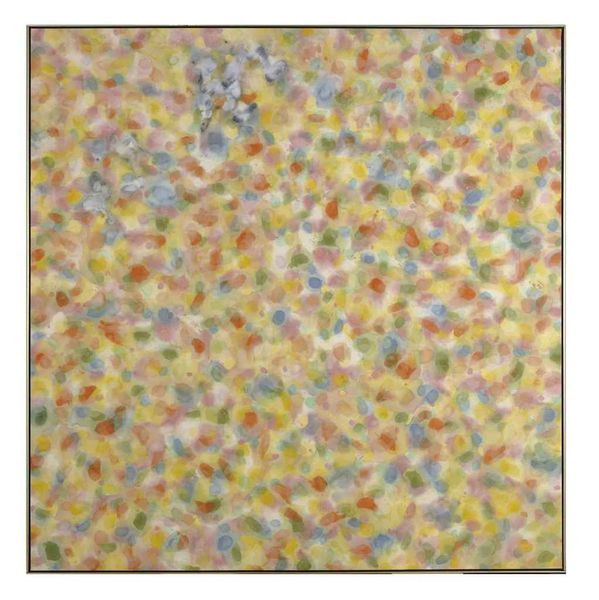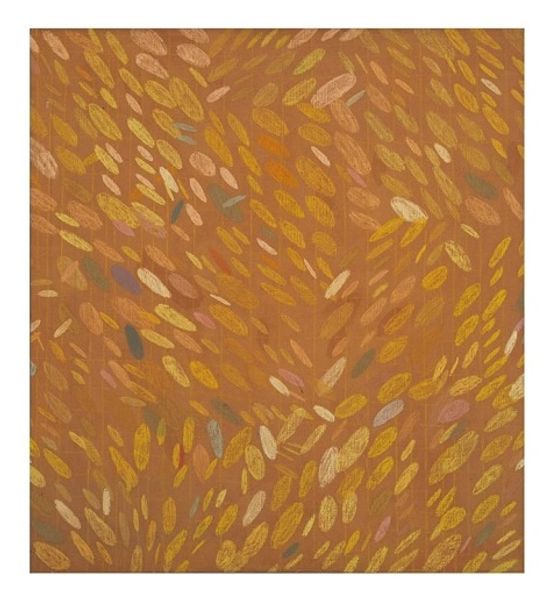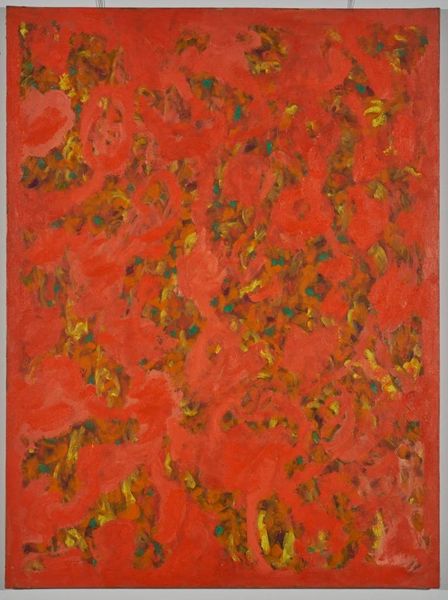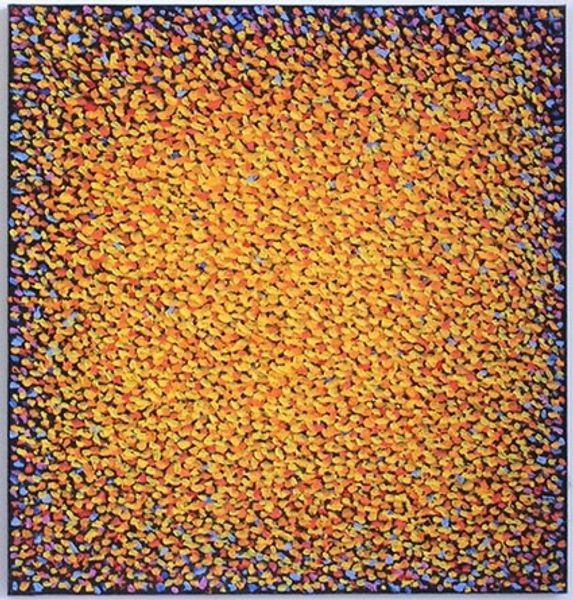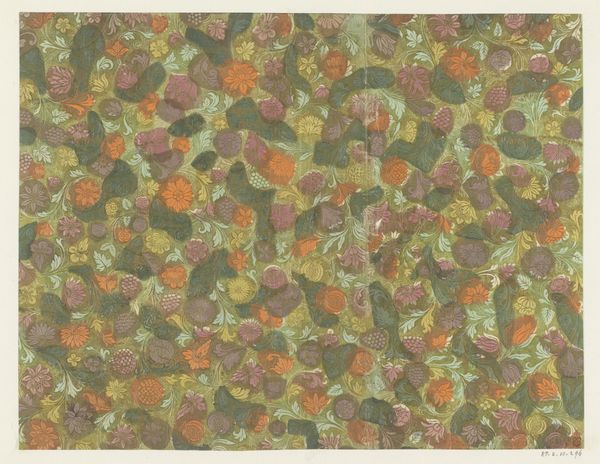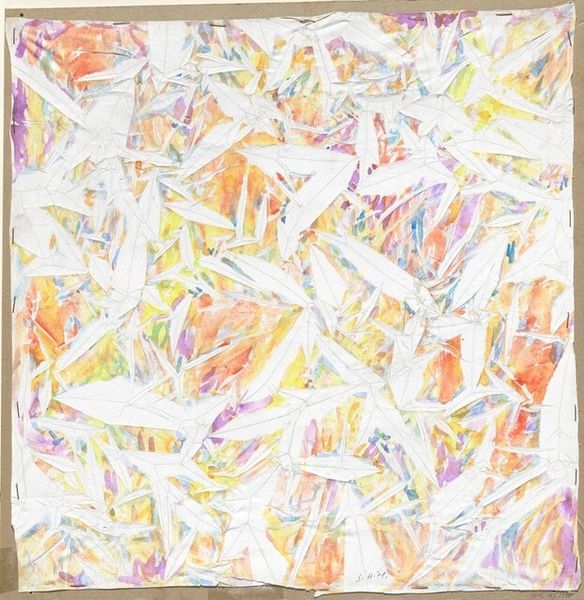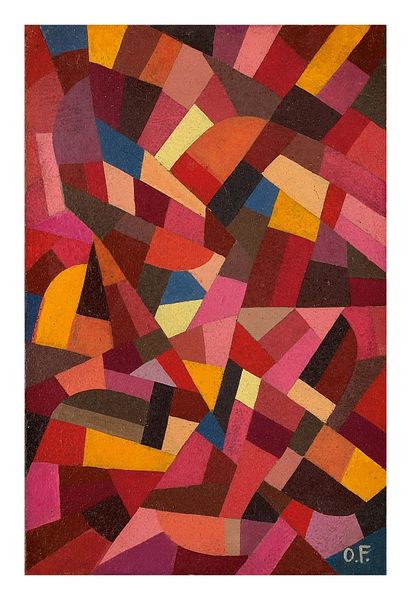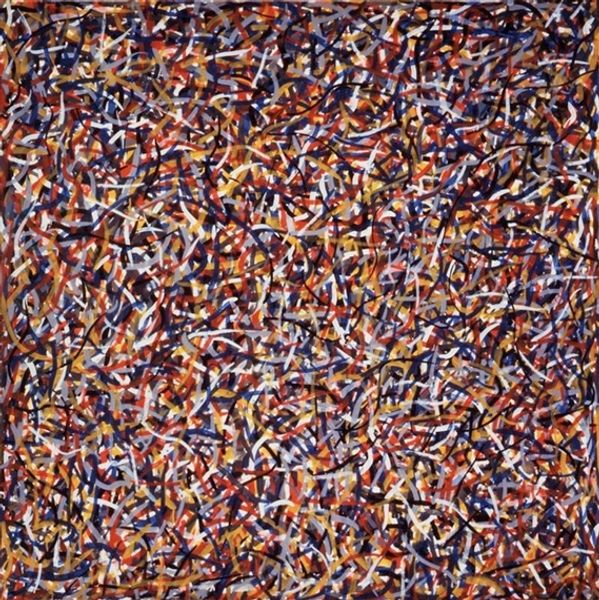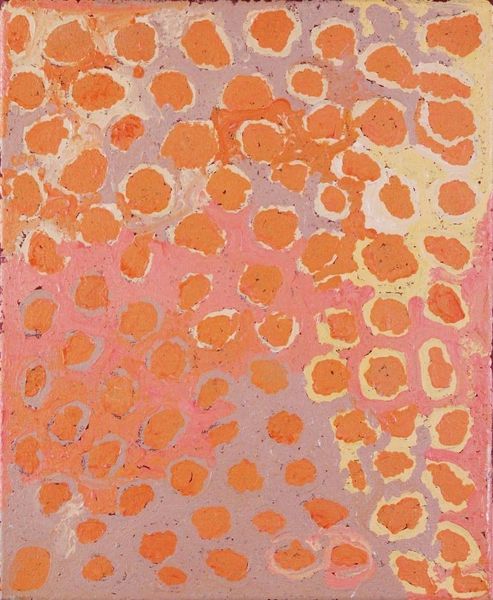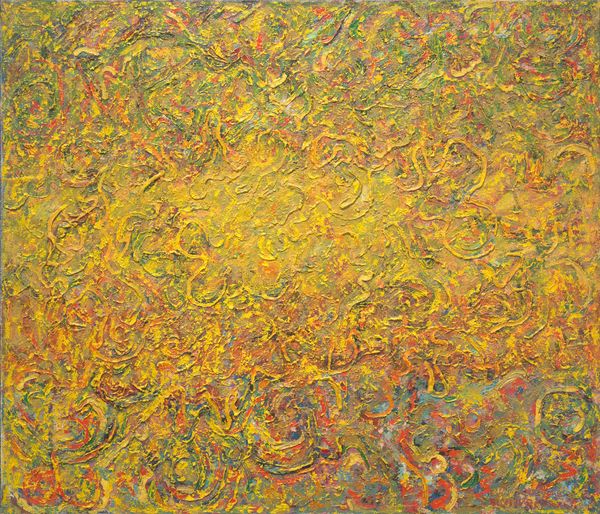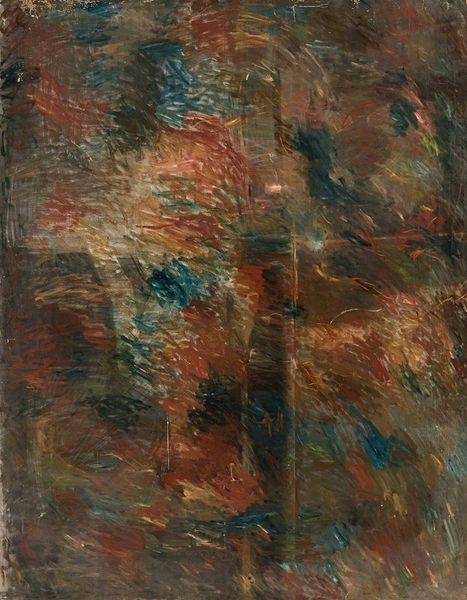
Copyright: Marcia Hafif,Fair Use
Curator: Welcome. Before us hangs Marcia Hafif's "Broken Color: Cadmium Red, Cadmium Yellow, Ultramarine Blue," painted in 1978. Editor: Wow, it's a mesmerizing field of color! My first thought is of sand dunes seen from above, each grain reflecting slightly different light. There’s an earthy warmth to it that I find instantly comforting. Curator: It's fascinating how Hafif challenges traditional notions of color field painting through systematic application and repetition. It begs us to consider Postminimalism's influences, with her deliberate gesture against pure, unmodulated fields of color and clean lines. Editor: Exactly! It's like she's taking minimalism and roughening it up, adding a human element, an imperfect quality. It feels handmade, like someone painstakingly applied each stroke with intention. Curator: And in that painstaking process, Hafif addresses notions of labor and the demystification of the art object, which resonates with feminist critiques of artistic production. She isn't trying to trick the eye, the labor is laid bare for us to unpack, like the repetitive labor so often ascribed to women. Editor: I love how she doesn’t try to blend the colors perfectly. They exist alongside each other, creating this shimmering, almost optical effect. You can feel each brushstroke! Is it acrylic? Curator: Yes, acrylic on canvas. Which emphasizes that flatness of the canvas while the “broken color” generates subtle optical vibrations and depth. How do you feel the painting situates itself within abstraction? Editor: I feel it's abstraction at its most honest. No grand narratives, just the pure experience of seeing. It's like Hafif is saying, "Here's the paint, here's how I applied it. What do you see?". It really lets the viewer project their own experience onto the work. Which is, I suppose, its own kind of statement. Curator: Precisely. Her choice to restrict the palette draws our focus to process and material—almost acting as a critical inquiry into the foundations of painting. It's both beautiful and incredibly thoughtful. Editor: Totally! Well, I could stare at it for hours. Thanks for giving me a new lens through which to appreciate Hafif’s work. Curator: My pleasure. It's important we keep looking closely. It reminds us that art, like the social fabric, is woven with intention, accident, and enduring relevance.
Comments
No comments
Be the first to comment and join the conversation on the ultimate creative platform.
